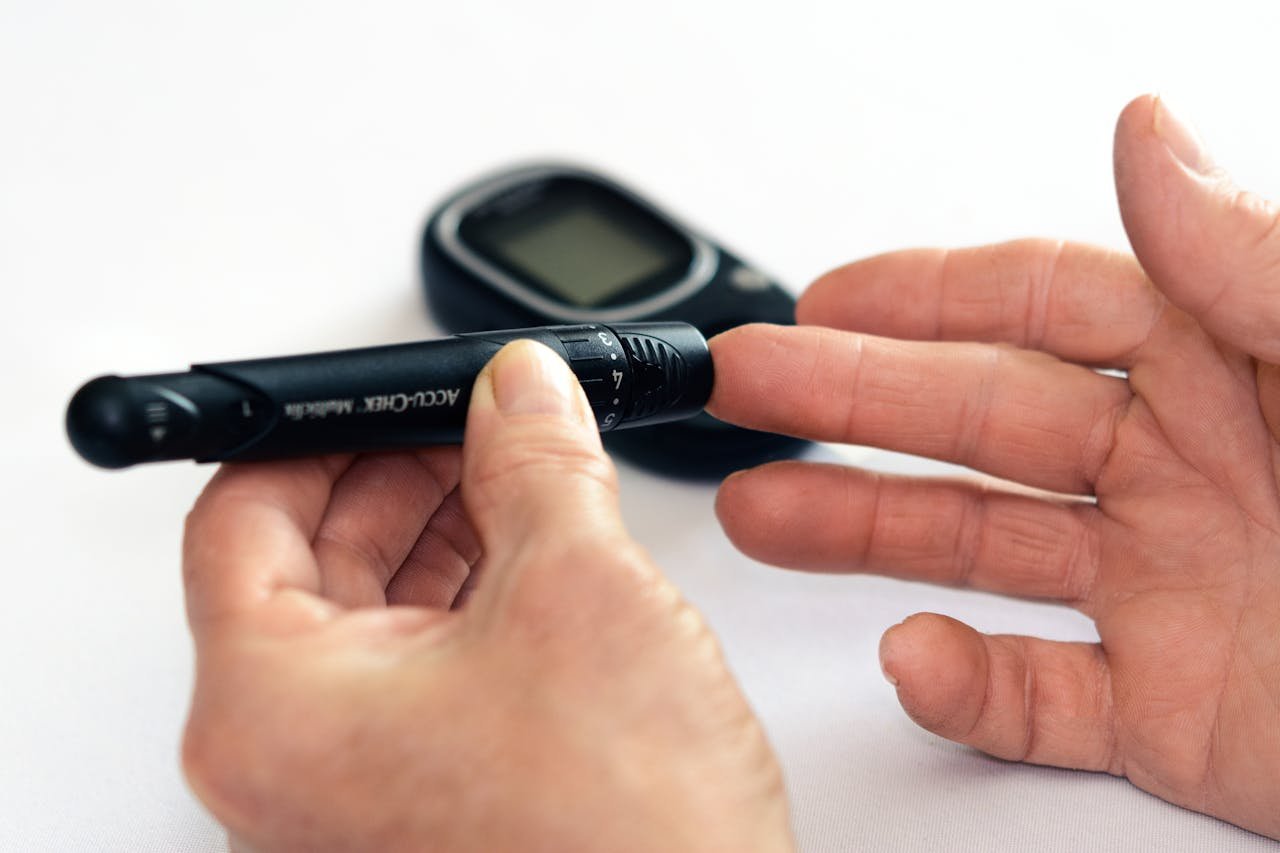Diabetes is a long-term disease that affects how your body uses blood sugar (glucose). It is one of the most common diseases across the globe, affecting millions of individuals. It’s important to understand diabetes and how to manage it, so you can live a healthy life and manage diabetes.
What Is Diabetes?
Diabetes explains the body either does not make enough insulin or does not use the insulin that is produced effectively. Insulin is a hormone produced by the pancreas that helps the body use blood sugar for its energy needs and keep blood sugar levels in check. Even when insulin is not working effectively, blood sugar levels may rise to dangerous levels, if not addressed properly, which can lead to serious health issues.There are 2 types of diabetes: Type 1 and Type 2. There is a 3rd classification—gestational diabetes, which can occur when a woman is pregnant.
Types of Diabetes
Type 1 Diabetes
Type 1 diabetes is an autoimmune disease where the immune system attacks the cells in the pancreas that create insulin. This means people with Type 1 diabetes do not have any insulin at all. It usually appears in childhood or young adulthood but can occur at any age.
Type 2 Diabetes
Type 2 diabetes is the most common type of diabetes. With Type 2 diabetes, either the body does not produce enough insulin or the cells do not respond properly to insulin. Eventually, the pancreas cannot make enough insulin to keep blood sugar levels within a healthy range. Type 2 diabetes is typical in adults, but is increasingly seen in children with higher obesity rates.
Gestational Diabetes
Gestational diabetes develops during pregnancy and occurs when the body does not produce enough insulin to meet the needs of the mother and baby. While gestational diabetes typically goes away after the delivery, women who have experienced gestational diabetes are more likely to develop Type 2 diabetes later in life.
Symptoms of Diabetes
The symptoms of diabetes vary from person to person and depend on the type of diabetes a person has and their blood sugar levels. Common symptoms include:
- Extreme thirst and urination
- Unexplained weight loss
- Increased appetite
- Fatigue or weakness
- Blurred Vision
- Slow healing sores or frequent infections
- Numbness or tingling in the hands or feet (common with Type 2 diabetes)
Causative Issues and Risk Factors
The precise origin of diabetes will depend on the type, but both genetic and environmental factors are involved.
- Type 1 diabetes is believed to result from autoimmune damage to the insulin-producing cells in the pancreas. What prompts the immune response, however, is not clear; it may be determined by some combination of genetic predisposition and viral infection.
- Type 2 diabetes has ties to lifestyle factors, such as poor diet, lack of activity, and obesity. Genetics also play a role, as one is at greater risk if a close family member had Type 2 diabetes.
- Gestational diabetes is related to hormonal changes occurring during pregnancy but certain factors, such as obesity and a family history of diabetes, may put the woman at greater risk of becoming diabetic with this condition.
- Diabetes Complications
- Poor management of blood sugar levels can lead to complications, such as:
- Heart disease and stroke
- Kidney disease (diabetic nephropathy)
- Nerve damage (diabetic neuropathy)
- Vision loss, including blindness (diabetic retinopathy)
- Foot damage, which may require amputations
- Skin infections and delays in wound healing With good management (i.e. maintaining a good blood sugar level), the individual can lower the risk of these complications.
Diabetes Management
While there is no known cure for diabetes, it can be treated successfully with changes in lifestyle, medication, and blood sugar monitoring.
1. healthy diet
is very important for managing blood sugars. A healthy diet should have plenty of vegetables, fruits, whole grains, low-fat protein, and healthy fat with some carbohydrates. The amount of food and carbohydrates you eat is very important in diabetes management.
2. physical activity
can reduce blood sugar levels and make the body more sensitive to insulin. Being active, and maintaining a healthy weight, is especially important for Type 2 management.
3. Medication With
- Type 1 diabetes, insulin injections are needed, since the body makes no insulin.
- Type 2 diabetes may require medication to improve insulin sensitivity or to have the pancreas make more insulin. Some people will require insulin.
- Gestational (pregnancy) diabetes can be treated with diet, physical activity, and sometimes insulin as well.
- 4. monitoring blood sugar level
- Blood glucose monitoring is critical in the management of diabetes. This can be accomplished by finger-sticks or continuous glucose monitors (CGMs), which show blood sugar levels continuously.



